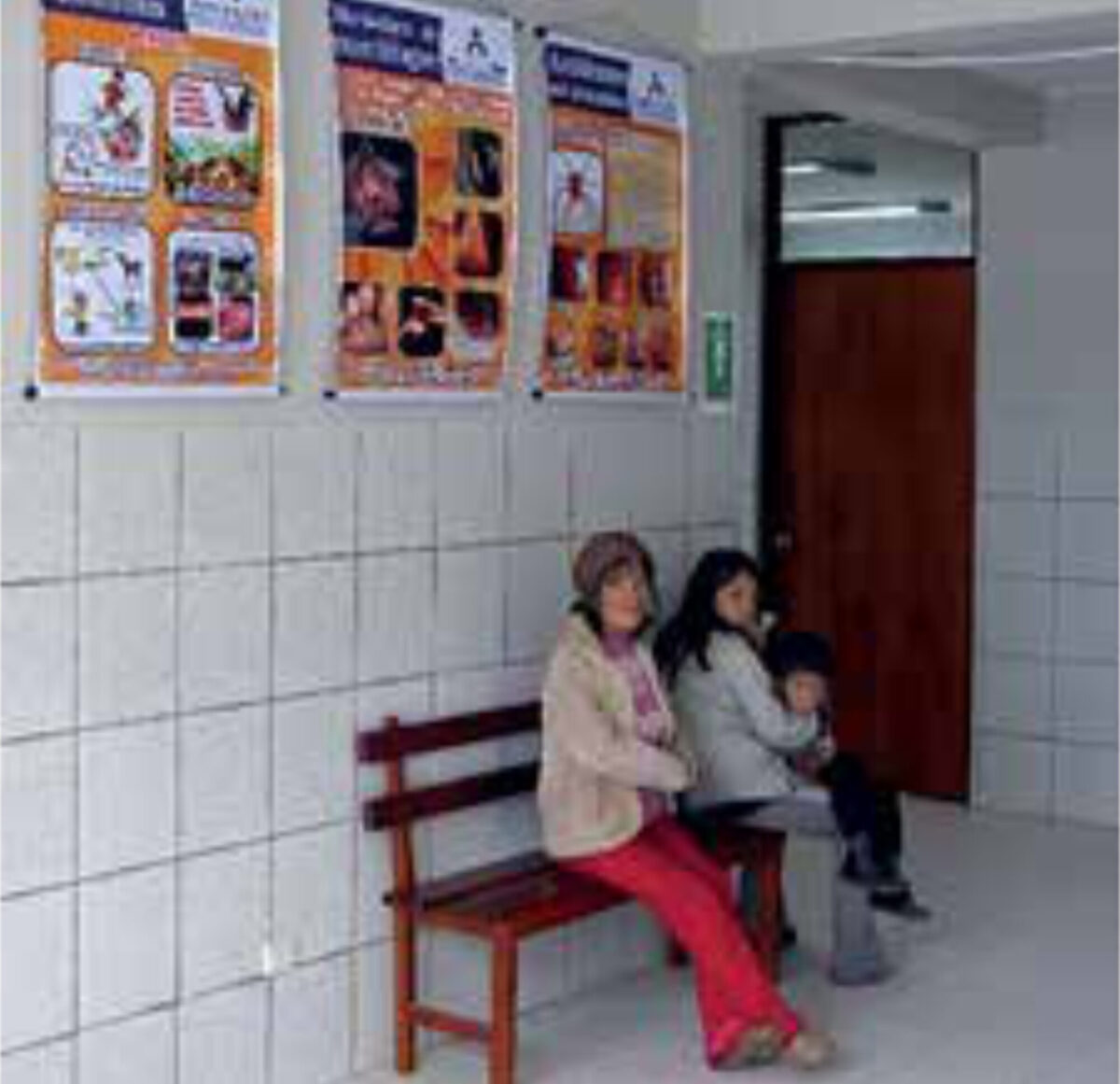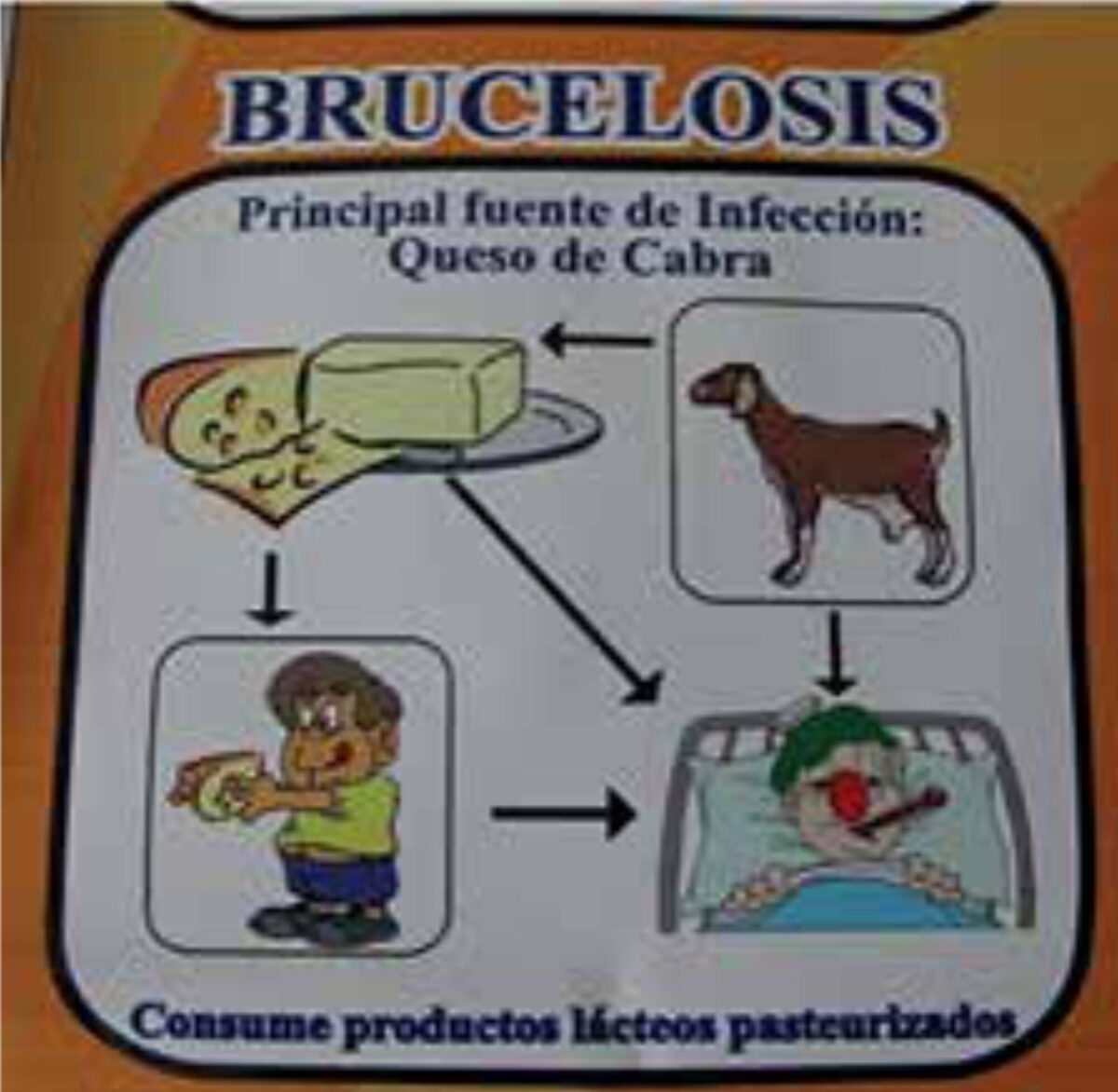Main content
Brucellosis is the most com-mon bacterial zoonosis of livestock, with Brucella (B.) abortus, B. melitensis and B. suis infecting cattle, small rumi-nants and swine, respectively, as their main hosts, and humans as an incidental host.[1] Discovered in the nineteenth century as Malta fever, brucellosis continues to present veterinarians, public health work-ers and clinicians with challenges with respect to disease control, prevention, and diagnosis and treat-ment. The intracellular lifestyle in macrophages and other cells of the immune system, where the patho-gen manages to persist indefinitely while suppressing immune respons-es and shielded from antibacterial treatment, is largely the cause of these problems.
Brucella, the master of stealth
Brucellosis is an undulating fever that may become persistent and disseminate to any organ, causing severely debili-tating disease.[2] Brucella bacteria are among the most infectious pathogens requiring as few as 10-100 organ-isms to cause disease. In animals, Brucella replicates most efficiently in the nutrient-rich environment of the placenta. The pathogen is secreted in milk and is present in placental tissue and fluids. Consumption of raw milk and milk products and exposure during assistance with lambing and calving are among the major risk factors for human infection. Infection takes place through the mucosal tissues of the gastrointes-tinal and respiratory tracts and of the conjunctiva.[3] Brucella bacteria that pass the mucosal lining are engulfed by macrophages where Brucella escapes lysosomal destruction by creating a unique replicative permissive organelle, the so-called Brucella-containing vacuole (BCV). In the BCV, Brucella may persist indefinitely, and infected macrophages function as a vehicle for dissemina-tion to other tissues and organs.
Brucellosis control, the tragedy of poverty
Control has been successfully achieved in many countries by mass vaccination, using the effective Rev1 vaccine for goats and the S19 vaccine for cattle (a vaccine for porcine brucellosis does not exist). The World Organisation for Animal Health has strict guidelines for mass whole-flock vaccination and annual or biannual vaccination of all new-borns often being the only option for countries where extensive farming is practiced.[4] Vaccination should be continued for at least the livestock replacement cycle and until the prevalence is below an acceptable level, at which point surveillance with test and slaughter is critical to remove remaining and new foci. From a One Health strategy point of view, systematic reporting of cases at the hospital and in the general practitioners’ office may help to focus control efforts. Surveillance by public health workers of high-risk groups, including veterinarians, slaughter-house workers and milkers, for Brucella related symptoms and serological evidence could also be very useful.[5]
Unfortunately, control efforts have failed for almost any reason imagin-able, including incomplete vaccination, use of wrong dose, route or timing of vaccination, and no or poor surveillance strategy. For instance, in preparation of a vaccination campaign, a surveil-lance for bovine brucellosis in districts of South Sulawesi, Indonesia showed 19.3% seroprevalence along with 39% reproductive failure.[6] However, while vaccine would be made available for a single vaccination round, a follow-up strategy was lacking. One of the factors that may complicate the control of B. melitensis in particular is the frequent transmission to cattle.[7] Thus when co-herding is practiced (or when goat and cattle use the same pastures or water sources), vaccination of cattle against B. melitensis (with S19) needs to be considered to prevent reinfection of goats. In many countries in the Middles East, the Indian subconti-nent, Asia and Africa where brucel-losis is still endemic, control efforts have been ineffective or not attempted because of the huge (financial) and long-term commitment required.
Human brucellosis, a disease in masquerade
The clinical spectrum of brucellosis includes fever, sweat and constitutional symptoms in most patients. Severe comorbidity such as osteoarticular involvement (sacroiliitis, spondylitis, peripheral arthritis, and osteomyelitis), gastrointestinal presentations (abdomi-nal pain, splenomegaly, hepatomegaly and hepatitis), epididymo-orchitis or neurological, respiratory and cutaneous manifestations may occur as well.[2] The protean manifestations make laboratory testing, preferably by blood culture,[8] and information on risk behaviours and possible exposure indispensable to reach a diagnosis. However, as blood culture requires a specialised laboratory, in prac-tice a variety of serological tests includ-ing point-of-care assays is used.[2] Even though effective antibiotics for brucel-losis are available, a number of issues have not been solved. The recommended regimens are those combining doxycy-cline and an aminoglycoside or rifampi-cin. Of these, the classical combination therapy of doxycycline (for six weeks) plus streptomycin (during the first two weeks) is most effective, with lower relapse and treatment failure.[9] For patients with focal complicated disease, prolonged treatment with or without surgery may be needed. Gentamicin is used as an alternative for streptomycin, but insufficient data is available to sup-port other (double and triple) combina-tion therapies. Shorter courses and single antibiotic treatment should never be used. An all-oral therapy effective in acute as well as persistent localised cases is not available, and definite treatment options for young children and for preg-nant or lactating women are not defined.
When does disability weigh enough?
The estimates of disability weights have been proposed to be at least 0.150 for persistent, localised brucellosis and 0.190 for acute brucellosis.[10] The impact of brucellosis in rural and unde-veloped areas, where access to medical care is limited and where most patients live, will be most profound. Poor educa-tion increases the risk of exposure and limits health seeking behaviour, con-founding persistent focal and relapsing disease, and making effective treatment even more cumbersome.[11] Resulting disability has consequences for fam-ily income, in particular for farmers who also risk losing their livestock because of brucellosis. Under such conditions, community health educa-tion is essential. Health workers may also be involved in active screening of risk groups. A notable risk group may include family members who share the same exposure.[12] Patient support from public health workers is often essential to improve treatment adherence.[13] The devastating effects of brucellosis may be most apparent to public health work-ers, and the public health service has an important task in keeping brucel-losis on the agenda of policy makers.
A treasure bug continues to surprise scientist
Once inside the host cell, Brucella rap-idly switches gene expression to alter its pathogen-associated molecular signa-ture. A crucial factor is the expression of the bacterial VirB type IV secretory system (VirB T4SS).[3,14] In some other pathogens, such as Bordetella pertussis, this secretory system injects a toxin into the host cell. Brucella VirB T4SS transports some 15 effector proteins that function to prevent immune recogni-tion, establish and maintain the BCV, support nutrient acquisition, or promote replication etc. Of note is the transport by VirB T4SS of an activator protein (named VceC) of the unfolded protein response (UPP). In eukaryotic cells, UPP safeguards the proper folding of newly synthesised proteins and may activate a process called programmed cell death (apoptosis) when unfolded malfunctioning proteins accumulate. Activation of UPP by VceC appears crucial for Brucella to maintain infec-tion, as UPP activation is essential for replication and nutrient acquisi-tion and promotes cell-to-cell spread. Apparently, through the VceC effector molecule, Brucella manages to alter and use UPP to safeguard infection and to live its hidden, stealthy life.


Conclusion
Tools to diagnose, treat, prevent and control brucellosis may not be perfect but have proven to significantly reduce the disease burden. Unfortunately, as a disease of poverty that tends to gener-ate poverty, interest in brucellosis is declining and the economic and public health impact is underestimated and not ranked high enough on the long lists of priority diseases to compete with the more fashionable diseases of affluence. The need for a long-term assignment with a significant invest-ment is the main barrier that prevents endemic countries from developing and implementing control efforts.
References
- Dean AS, Crump L, Greter H, et al. Global burden of human brucellosis: a systematic review of disease frequency. PLoS Negl Trop Dis. 2012;6(10):e1865. doi: 10.1371/journal.pntd.0001865
- Franco MP, Mulder M, Gilman RH, Smits HL. Human brucellosis. Lancet Infect Dis. 2007 Dec;7(12):775-86. doi: 10.1016/S1473-3099 (07)70286-4
- De Figueiredo P, Ficht TA, Rice-Ficht A, et al. Pathogenesis and immunobiology of brucellosis: review of Brucella-host interactions. Am J Pathol. 2015 Jun;185(6):1505-17. doi: 10.1016/j.ajpath.2015.03.003
- Smits HL. Brucellosis in pastoral and confined livestock: prevention and vaccination. Rev Sci Tech. 2013 Apr;32(1):219-28. doi: 10.20506/rst.32.1.220d
- Osman AE, Hassan AN, Ali AE, et al. Brucella melitensis Biovar 1 and Brucella abortus S19 vaccine strain infections in milkers working at cattle farms in the Khartoum Area, Sudan. PLoS One. 2015 may 4;10(5):20123374. doi: 10.1371/journal.pone.0123374
- Muflihanah H, Hatta M, Rood E, et al. Brucellosis seroprevalence in Bali cattle with reproductive failure in South Sulawesi and Brucella abortus biovar i genotypes in the Eastern Indonesian archipelago. BMC Vet Res. 2013 Nov;9:233. doi: 10.1186/1746-6148-9-233
- Muendo EN, Mbatha PM, Macharia J, et al. Infection of cattle in Kenya with Brucella abortus biovar 3 and Brucella melitensis biovar i genotypes. Trop Anim Health Prod. 2012 Jan;44(1):17-20. doi: 10.1007/s11250-011-9899-9
- Espinosa BJ, Chacaltana J, Mulder M, et al. Comparison of culture techniques at different stages of brucellosis. J Trop Med Hyg. 2009 Apr; 80(4):625-7.
- Solís García del Pozo J, Solera J. Systematic review and meta-analysis of randomized clinical trials in the treatment of human brucellosis. PLoS One. 2012;7(2):232090. doi: 10.1371/journal.pone.0032090
- Dean AS, Crump L, Greter H, et al. Clinical manifestations of human brucellosis: a systematic review and meta-analysis. PLoS Negl Trop Dis. 2012;6(12):21929. doi: 10.1371/journal.pntd.0001929
- Kunda J, Fitzpatrick J, Kazwala R, et al. Health-seeking behaviour of human brucellosis cases in rural Tanzania. BMC Public Health 2007 Nov 3;7:315. doi:10.1186/1471-2458-7-315
- Mendoza-Núñez M, Mulder M, Franco MP, et al. Brucellosis in household members of Brucella patients residing in a large urban setting in Peru. Am J Trop Med Hyg. 2008 Apr;78(4):595-8
- Maas KS, Méndez M, Zavaleta M, et al. Evaluation of brucellosis by PCR and persistence after treatment in patients returning to the hospital for follow-up. Am J Trop Med Hyg. 2007 Apr;76(4):698-702
- Ke Y, Wang Y, Li W, Chen Z. Type IV secretion system of Brucella spp. and its effectors. Front Cell Infect Microbiol. 2015 oct 13;5:72. doi: 10.3389/fcimb.2015.00072



















































